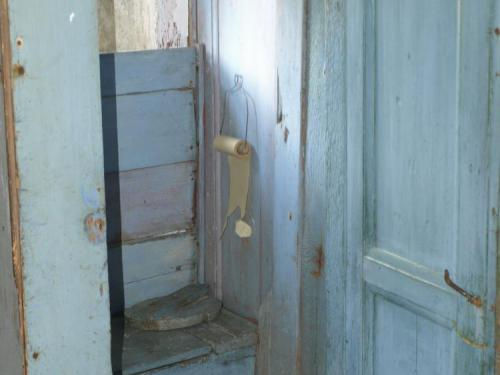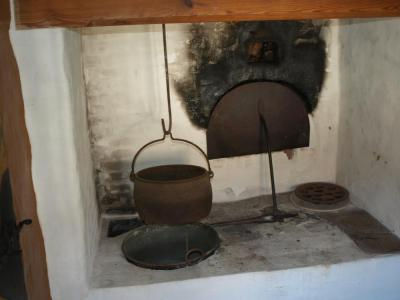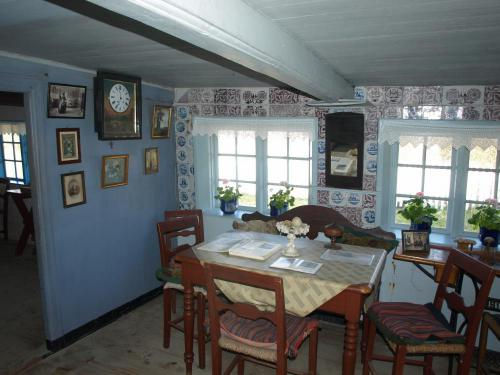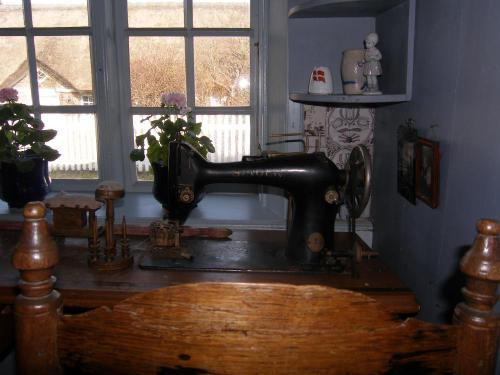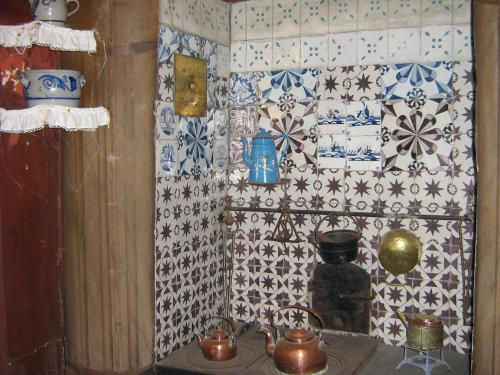
Hanne's House
Hannes Hus is an authentic Sønderho home from the golden age of sailing ships.
The foundation "Fonden Gamle Sønderho" acquired Hannes Hus in 1965 when one of Hanne's two daughters, the unmarried Karen Sørensen, 84 years old, moved in with her sister Maren in Sønderho.
The modest, yet not impoverished, Sønderho home from the glory days of sailing ships in the late 19th century provides a good impression of the living conditions in Sønderho.
Sætkagedag
Onsdag den 15. oktober 2025 kl 13-16 serveres sætkage i Hannes Hus. Alle er velkomne! Pris 30 kr, børn gratis.
MUSEUM HANNE'S HOUSE
TOUR OF HANNE'S HOUSE

"Synder donsk" - southern living room
You enter through the south door and enter the hallway - "frangel". To the right, you enter the southern living room - "Synder donsk".
In the middle of the inner wall stands a cast iron stove called "bilæggeren," where the embers from the wood-burning stove in the kitchen are placed to provide heat to the living room.
The living room’s alcove - "tætseng" - is preserved with bedding from the last time it was used.
Opposite the “bilæggeren” on the window wall and on the two side walls, Dutch tiles are mounted, as in many Fanø houses, to reflect the sparse heat from the “bilæggeren” stove.
From "synder donsk," there are doors leading to the captain's parlor - "æ stow," where he had his bed, and to "naar donsk," which was Karen's sewing room, from which there is a door to a small bedroom. Part of this bedroom must have been a "tætseng" with doors from "naar donsk."
In the captain's parlor, there is a hatch to a cellar room where, among other things, the fine floor sand was stored.
The terms "synder donsk" and "naar donsk" refer to the southern and northern cardinal directions.
Kitchen and larder
In the kitchen, whose fine painting was executed in the early 19th century, all the original kitchen utensils, copper kettles, bowls, and jugs that belonged to a household at that time hang and stand. Much of the porcelain and faience bowls are of English origin and are easily recognizable by Exner's famous painting "A Reproof". In the living room, there is a reproduction of this painting, which Exner dedicated to Hanne.
Among the utensils on the wall hangs a candy tong that Hanne used for making candies called "skellebasser". Hanne was well-known for her Fanø candies.

On the beam hangs a small basket that was used when Hanne or her daughters went to Nordby for special shopping. On the original threshing floor, there is now a stove. Through the hatch in the back wall, embers were placed into the “bilægger” oven.
Next to the exquisite kitchen, there is a larder and a scullery with a masonry boiler ("gruekeddel")and a baking oven.

Floor plan
The floor plan shows the owen box (Bilæggerovn) that heats the living room.
In the utility room to the west of the kitchen, there is another wood-burning stove for heating the oven and the kettle.
In the space between the two principalities there is good heat. Here the alcove (tætseng) is located
The barn
From the scullery you come into the part of the house which is the barn. In the winter the milking sheep were kept here. There are a number of wooden mixing bowls from Russia hanging on the wall in the barn.
The small garden by the west gable of the house is surrounded by a seaweed dyke with buckthorn. The function of the seaweed dyke is both to enclose the garden and to keep the water out in case of flooding.

THE STORY OF HANNE

Hanne Sørensen became a widow at the age of 34 when her husband Poul Thomsen Sørensen disappeared with his ship on a journey to Iceland. A photograph of the ship has a prominent place on the tiled wall in the parlor. On the opposite wall, among peculiar things, there are photographs of Hanne and her husband.
Here in these modest surroundings, the widow Johanne Sørensen, called Hanne, lived from 1882 until her death in 1940 with her son Hans and her two daughters Karen and Maren.
Hanne's house is unquestionably the best-preserved example of a modest, yet not poor, Sønderho home from the time when Fanø was home to a large sailing fleet, and with all its furnishings, the house is of invaluable cultural and historical interest.
In Hanne's house, the furnishings have been continuously in use until Karen had to move to her sister, Mrs. Maren Thomsen, in 1965. With great reverence, the two sisters have preserved their childhood home.
Hannes Hus is protected by the Danish Agency for Culture and Palaces.
Hanne and the Artists
Here in these modest surroundings, the painter Professor Julius Exner (1825 - 1910) found his inspiration for a wide range of paintings.
Later on, the painter Heinrich Dohm (1875 - 1940) became a dear guest of the house, and several of his commemorative gifts are hanging in the rooms, including a photograph of "The King's Ride Across the Border" displayed at Christiansborg, a photograph of his painting "The Great White Herd" hanging in the chapel of Holmens Kirkegård in Copenhagen, and a painting of Hanne.

Heinrich Dohm: "Hanne Sørensen", 1920
References
MY FAN
Torben Garmer har på hjemmesiden Mit Fanø publiceret en række artikler om Fanøhusenes indretning:
SØNDERHO - A SKIPPER'S TOWN IN THE VADDEN SEA
Niels Frederiksens bog "Sønderho - En skipperby i Vadehavet" kan købes i Lorenzens butik.
STAIRCASE DENMARK
Trap Danmark om Hannes Hus
ALDUS
Per Hofman Hansen har på sin hjemmeside Aldus publiceret en række artikler om Fanøs kultur, natur og historie:
LITTERATURHENVISNINGER
Old Buildings in the Country, Association of 3. DCBR 1892, Copenhagen, 1916
Lund N W, Wold S, Dragsbo P, Frederiksen N, Fabricius N: At home on Fanø. BYGD, 22. Year, 2, 1991.
Hahn J: Tiles on Fanø. BYGD, 1993.
Meesenburg H, Termansen J, Tougaard S and Jepsen P U: Fanø - settlements and landscapes. BYGD, 1977.
Hartmann S, Søndergaard S M and Tuxen P: Old houses in Sønderho. Fanø municipality and the Danish Conservation Agency, 1980.
Søndergaard S M: Rudolph's memory in Sønderho. The association for information on building and landscape culture, 1996.
Michelsen P: The Freelands Museum's skipper's house from Sønderho on Fanø. The National Museum's Work Field, 1996.
PHOTO CREDIT
Thomas Skjold & Flying October













